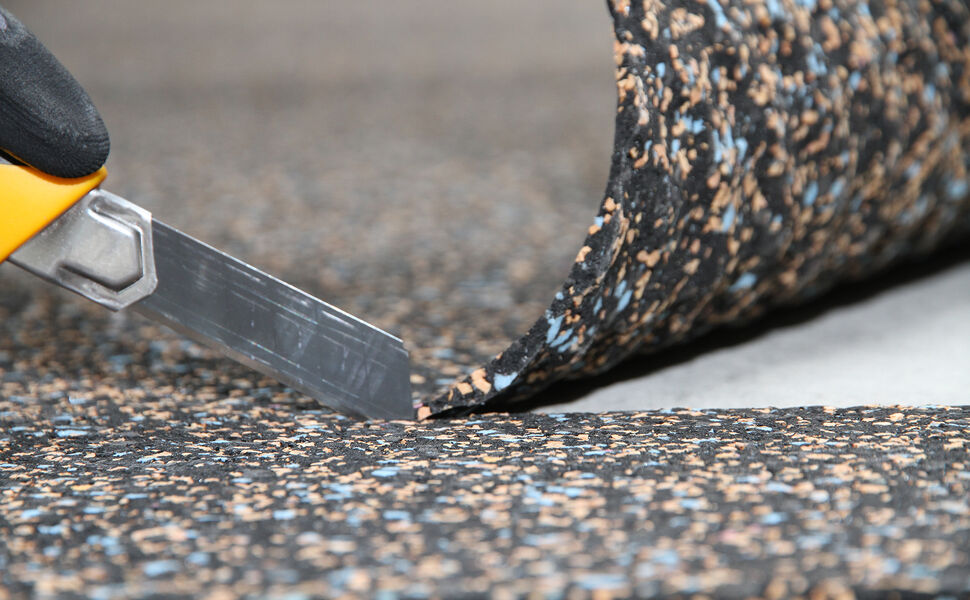
The search term acoustic mats is another example of the confusion perpetuated through marketing efforts to the uniformed. Companies use the word acoustic on everything to confuse and misinform the unaware about the true function of the actual product.
When they place the word acoustic in front of mats to form acoustic matts, they now can charge more since it supposedly has magical properties. The only “magic” in the term acoustic mats is the marketing effort placed behind the term. I am certain if this trend continues we will see acoustic toilet paper. There is no such thing as an acoustic mat. It is simply a mat. It will not perform any absorption or diffusion requirement in its function which is the objective of any acoustic product.
Acoustical Mats – A Marketing Gimmick?
Acoustic mats are simply a regular mat that the word acoustic has been added to to create a perception that somehow this ordinary mat has taken on the magical properties of absorption and diffusion. Nothing could be further from the actual truth. Stay away from anything that has the word acoustic in its name that doesn’t absorb or diffuse sound energy. There are no such things as acoustic mats. There are mats but no acoustic mats.
Read more about sound barriers.
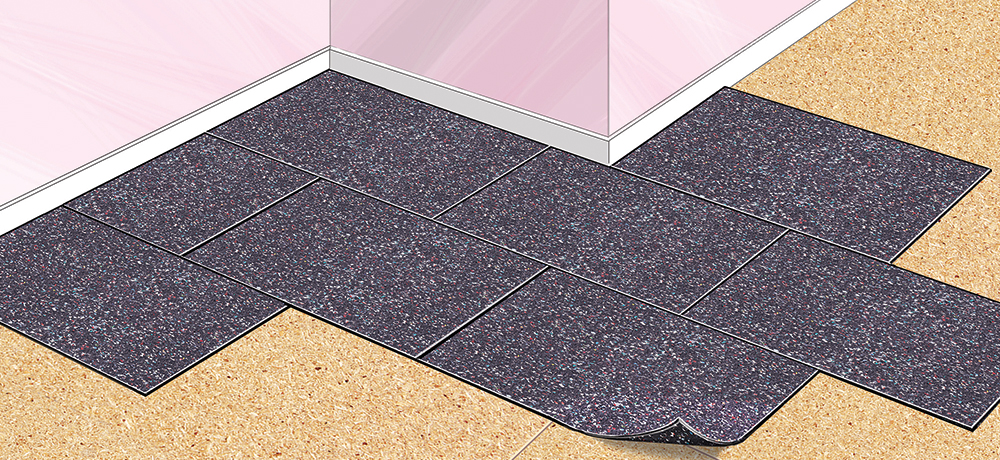
Airborne vs Vibrational Energy
The science of acoustics is broken down into two main parts. We have airborne energy along with vibrational energy. Airborne energy travels through the air within our rooms from our stereo systems and does two main things. The lower frequencies do not fit in most small rooms and when that happens the air between the walls produce resonances which are termed room modes.
Airborne Energy turning into vibrational energy
The energy from our stereos also hit the walls and are reflected back to your ears within the room. This process is termed reverberation and is defined as to how long a sound stays around within a room after it has been sung, spoken, or played. This airborne energy whether modal pressure or reflections strikes the room boundary surfaces and then it becomes vibrational energy. It is the vibrations of the airborne energy that is transmitted through the wall structures to produce noise transmission. Vibrational energy must be reduced using different processes than absorption and diffusion.
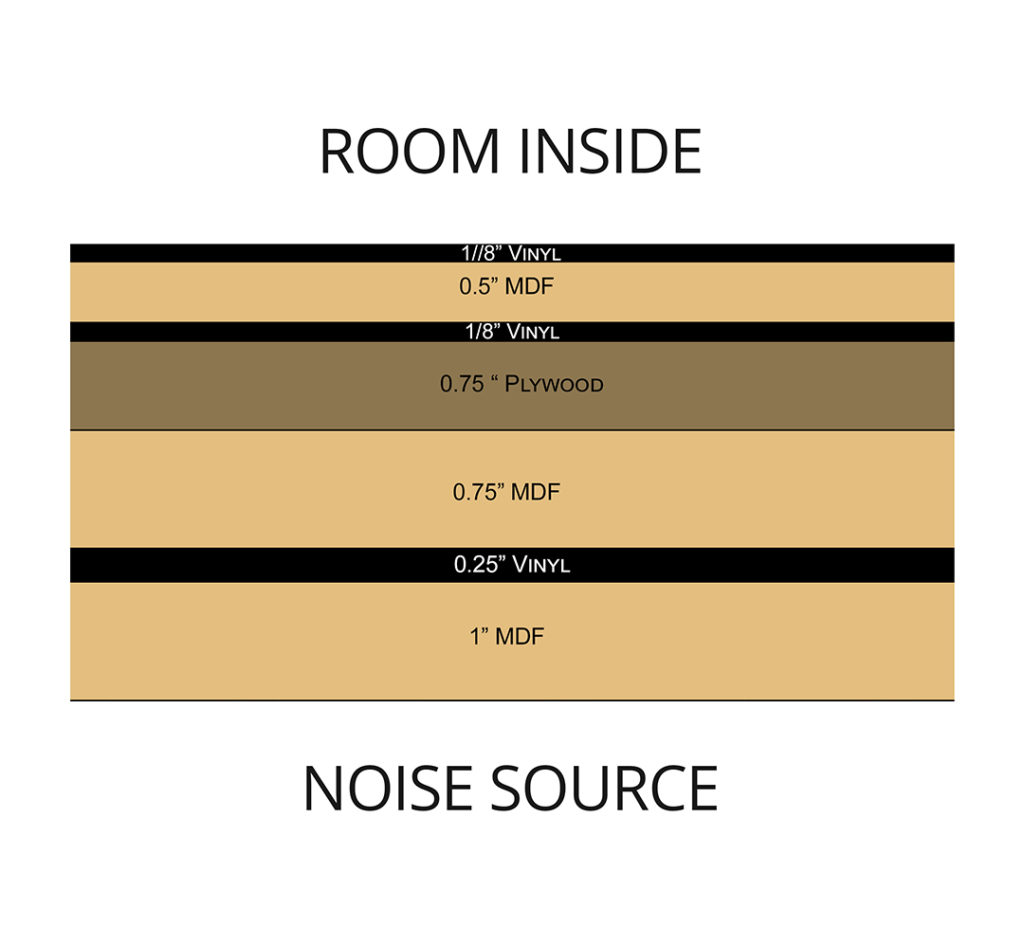
Mass Loaded Vinyl To Reduce Vibrational Energy
When you see the term acoustic mats, you are seeing a common material type with a fancy name applied to it so companies can charge more for the material type. By granting it special acoustical issues, one is “allowed” to charge more for the common material type. Let’s use an example with mass loaded vinyl. Vinyl has been a common material type in our cultures for years. Companies have taken vinyl and added more mass or density to increase its ability to minimize vibration transfer.
There is nothing acoustical about this process. It is a common material type with a new name. Will MLV reduce vibrational transfers? Yes, but only at certain frequencies and this is where the marketing departments play upon the ignorance of the consumer. They will market the product as an acoustic mat without telling you how it will perform in your particular noise transmission issues. People think that a 1/4″ thick piece of material type will reduce the vibration from a 30′ long low frequency wave. It will not. It will minimize some frequency transmission but not at the correct frequencies or will get enough vibrational reduction to have an audible impact.
Read more about our recording studio design services.
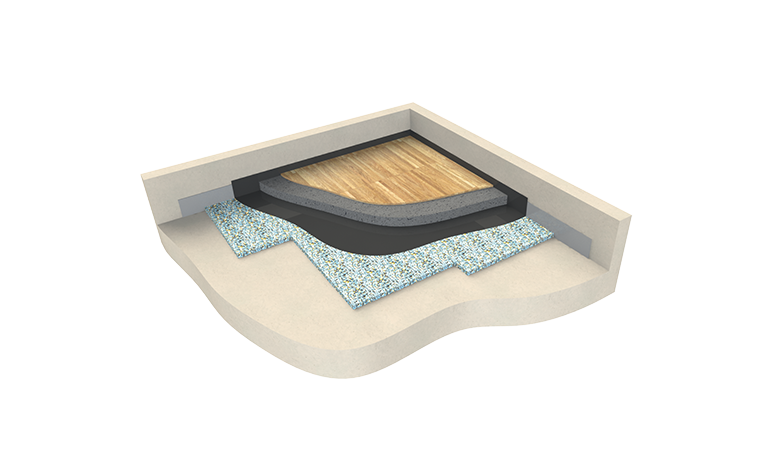
Noise Transmission Issues
What people need to realize is that any common material type can be labeled acoustic. You can have acoustic mats. You can have acoustic drapes. You can even have acoustic carpet. This marketing labeling is nothing more than that. It is using the adjective acoustic to produce a perception not a reality. Most material types can be used for many applications when it comes to vibrational management. Most material types when arranged in layers will provide some mitigation of the frequency of vibrations. The real question that must be asked is will the material type work for my particular noise transmission issue. This is where the shoe pinches.
Companies label material types with the word acoustic without actually defining what frequency and amplitude of the vibrational signature that the technology will actually work at.. Will it stop the noise transmission from children running upstairs or will it just work for one adult walking. Without knowing the frequency and amplitude (strength) of the noise, you are just guessing or worse yet buying something that will not work for your application. Guessing with noise is expensive and frustrating. Most of the time, you have to demo it and start over.
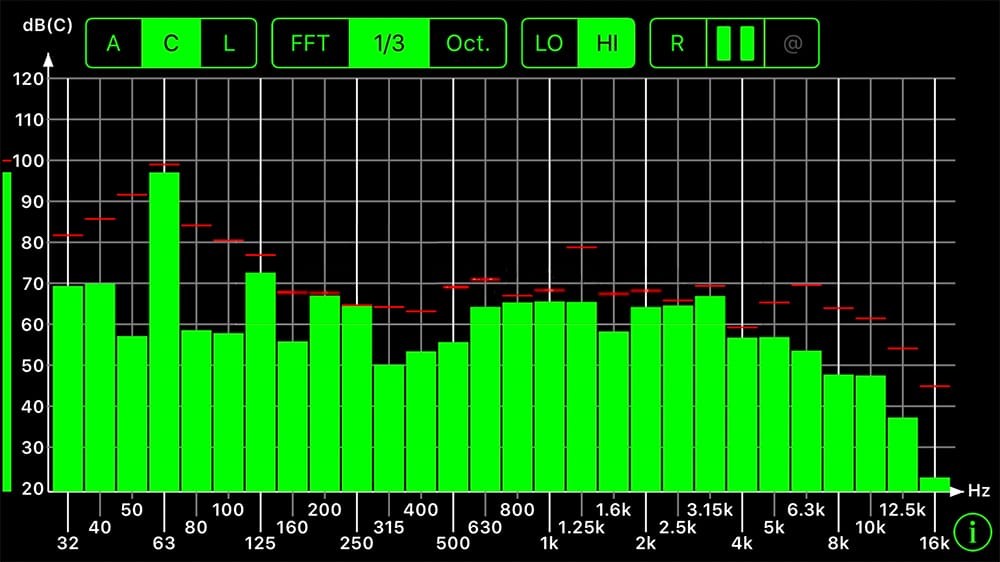
Measured Inside & Outside Noise
All noise or sound has two main components. It has frequency and amplitude. The frequency of the noise source is divided up into hertz (hz) which is a unit of measure. We have low, middle, and high frequencies of noise. We have low frequency noise represented by the garbage truck in the morning hours setting off the motion sensors in cars. We have bass drum noise from the musician downstairs. We have middle range noise which is centered around voice.
Higher frequency noise is fingernails across a blackboard. The frequency and amplitude of all noise issues must be quantified and qualified. You must measure what frequency the noise is at and how strong it is. You must know where the noise “lives” within the human hearing audible spectrum. Once you know that data measured over a seven day time period so you achieve a complete picture of the noise, you can then select the appropriate material type to mitigate the frequency and amplitude of your noise. At www.acousticfields.com, we have a process where you can use your cell phone to take noise measurements.






